Dew on your lens can ruin an evening of night photography. No one wants to get home to find that their photos are completely fogged up.
I photograph in mostly arid regions, so condensation on lens is typically not a consideration. Because of this, I can be caught off guard if I photograph near the coast or on the East Coast, as you can see below. Dew can set in quickly — these photos were only taken 10 minutes apart. Below, I’ll discuss three ways to keep dew off your lens.
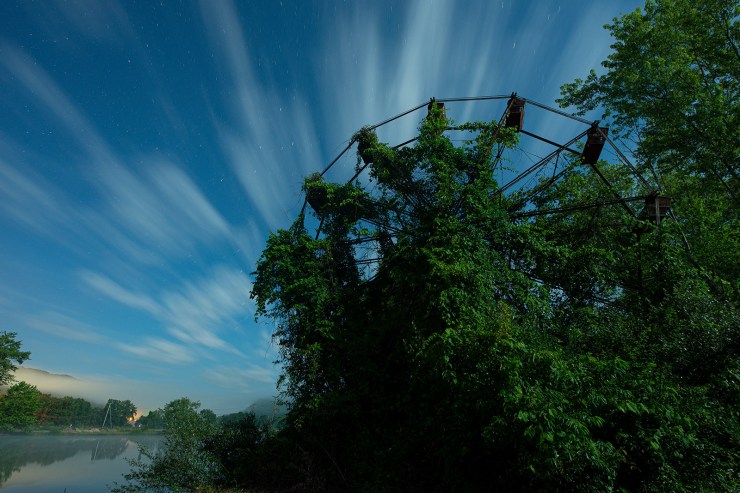
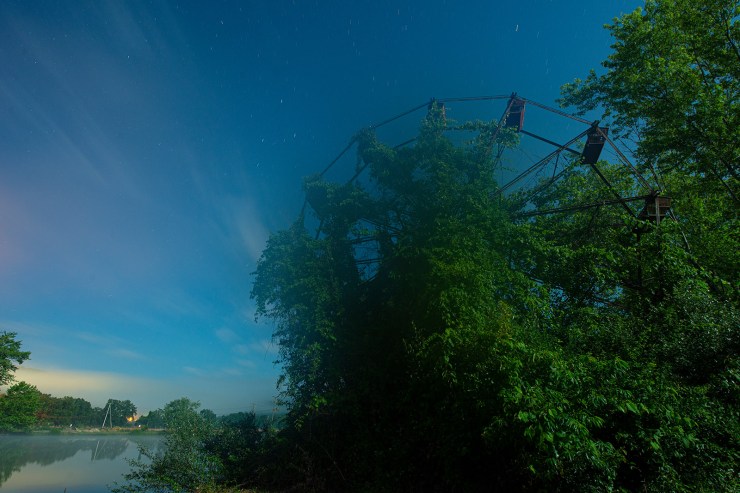
When does lens fog occur?
Your lens can build up condensation if the glass is colder than the air around it and there’s some humidity in the air. There’s more to it than that, of course. These factors are tied to dew point and air movement, all of which also affect condensation.
Three ways to avoid dew on your lens
Keeping the lens hood on your lens is the easiest way to keep dew off your lens. Covering the front element helps protect it from the outside colder air for just a little longer. However, this only works up to a point, so we’re not going to count this as one of the three ways. I’ll begin with the cheaper, lower-tech methods and work my way forward.
1. Hand warmers
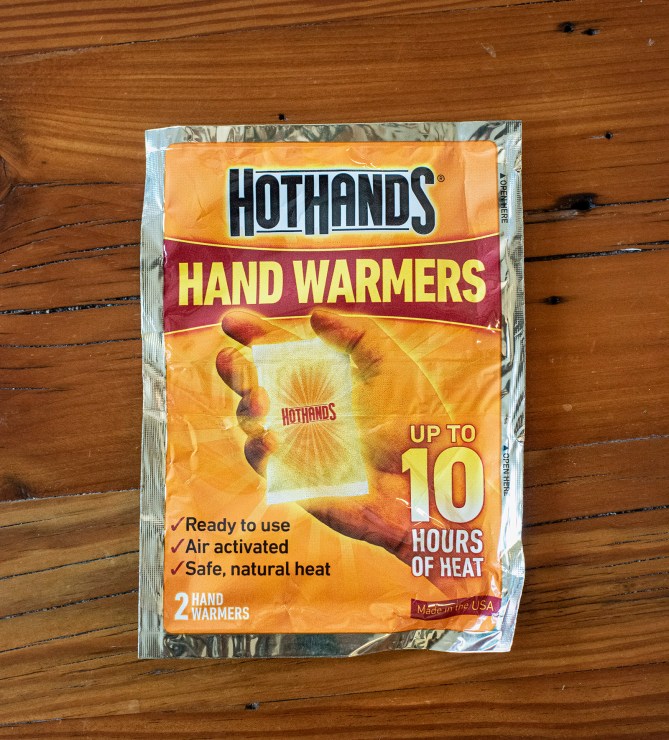
Hand warmers work well at, well, keeping the lens warm. Wrap a couple of hand warmers around the lens or lens hood. A lot of people use some cloth to try and insulate them.
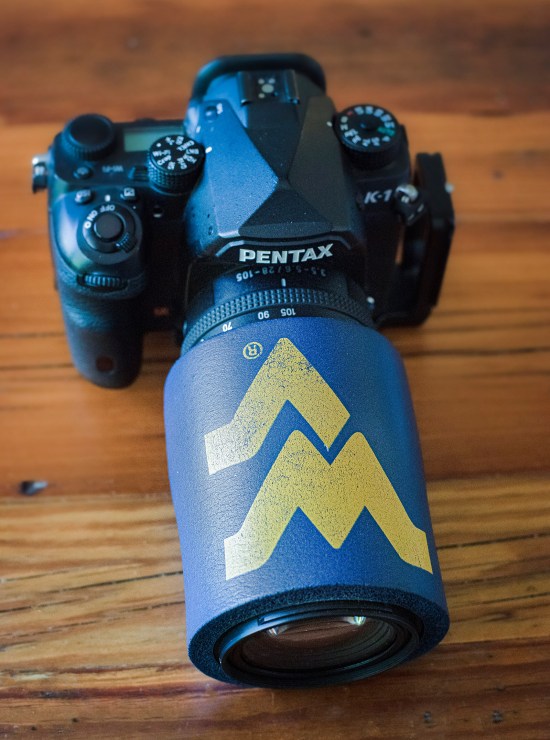
An alternative to only using rubber bands is to use a beer cozy. Now, this won’t fit all lenses, so you may have to modify the cozy or even cut it open. But this, coupled with a couple of hand warmers, works rather well due to the cozy’s insulation properties. Plus, as a bonus, it looks really fun.
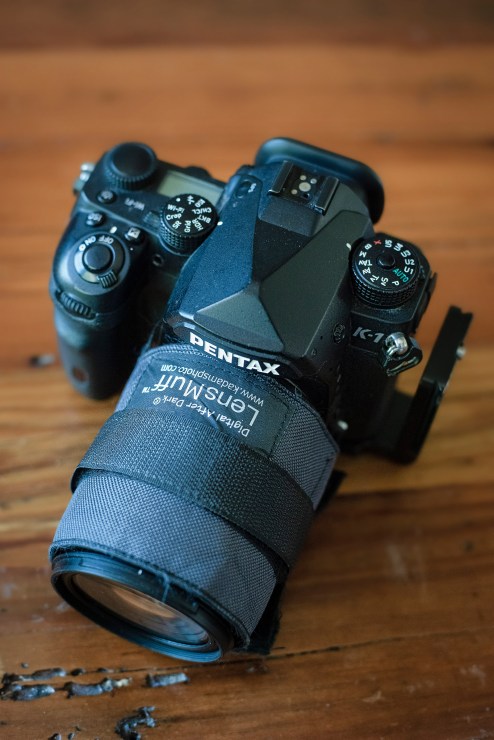
Even better is a LensMuff. This is specifically designed to wrap hand warmers around the lens and can accommodate very large lenses and is easy to put on quickly in the dark. It has pockets for up to three hand warmers, so there’s less likelihood of them slipping around. And you can use more than one Lensmuff and attach them together for larger lenses or telescopes.
The upside: This is cheap, lightweight, requires no power and is easy to do.
The downside: They are not always quite so reliable in very cold conditions. They also create waste.
Because I rarely photograph in environments where there will be dew on my lens, this is the method I use. However, I’ll discuss a couple of other methods I’ve seen people use.
2. Dew heating strips
These look somewhat like the LensMuff. However, the difference is that instead of stuffing hand warmers into the wrap, the wrap creates heat via a power source, typically USB.
These used to be rather expensive. However, as of late, they have dropped to a very reasonable price. This example here, a USB lens warmer, is rather inexpensive. If dew heating strips such as this were this inexpensive years ago, I may have opted for this route instead of the LensMuff.
If I were to use a dew heating strip, I would most likely power it with a reasonably powerful USB power bank. I believe most USB lens warmers, certainly the one I linked to, are 5V, and so are most USB power banks. Velcro the power bank to the leg of your tripod, and you should be good for the evening.
The upside: You may regulate the heat, and they are a continuous source of reliable heat. You may also use it to warm up other things such as baby bottles, making it multi-functional.
The downside: There’s more to set up, it’s more expensive and it requires power to work.
3. Fans
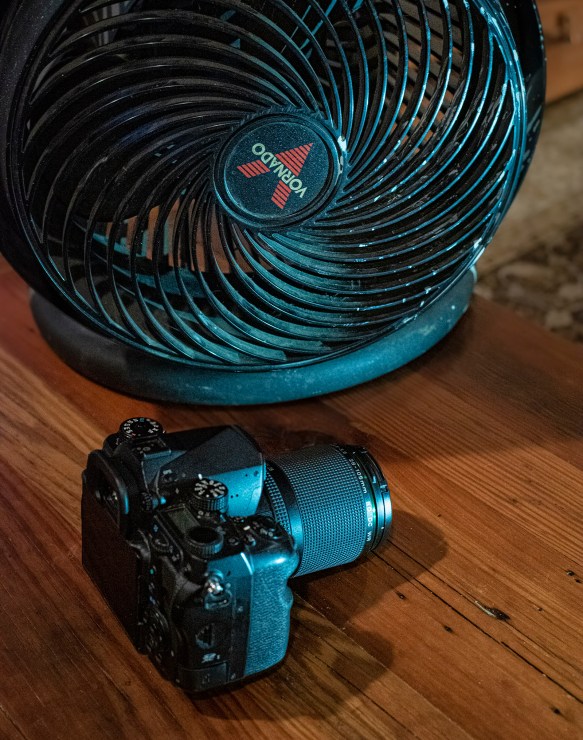
I suppose you could continually wave a fan in your hand. That would show serious dedication. But here, I’m going to propose using an electric fan.
I’ve never actually seen anyone use a fan. However, if you look around on photography and telescope forums, you can always find an enterprising DIYer who uses something such as a small computer fan, clamping it to an arm so it blows air on the front element of the lens.
This, however, would likely require a heavier-duty power source and require effective positioning during every setup. You might also need to be careful of vibration. However, if you connect the arm to one of the tripod legs, I doubt there would be any issue.
Of course, the issue I would probably have is banging into the arm or the fan in the dark. Because of this, perhaps attaching it to the camera’s hot shoe might work.
Perhaps if you didn’t mind carrying extra equipment, you could purchase a rechargeable portable fan, such as this 8-inch clip-on USB fan. I say “extra equipment” because a fan this large would almost necessitate mounting it on another stand due to vibrations, it seems.
How do I check for the likelihood of dew?
If the night-time ambient temperature starts creeping close to the dew point, you are more likely to get moisture on the lens. Check a meteorological site for dew point. Or if you have been reading some of my articles, you might remember that one of my favorite apps and websites, Clear Outside, provides the low temperature and dew point for specific locations along with other very useful information.
This information is good to know in advance. After all, using heat (or the fan) would be considerably more effective when begun before dew sets in. You want to stop the lens from dropping to that evening’s dew point, after all.
What I dew (pardon the pun)
I’ve used hand warmers in all combinations. I found that the LensMuff and hand warmer combination has worked remarkably well so far during summer and fall evenings.
If I photographed in colder environments, I would look into one of the dew heaters and have a couple of USB power banks ready to go.
If you know of other effective methods of keeping dew off the lens, I encourage you to share this in the comments below.
Tell your story with the second annual Visual Storytelling Conference!
Experience four days of interactive, online training sessions featuring a range of educational content with experienced photographers and content creators. This free event kicks off with a series of technical boot camps to build essential skills, followed by live, online sessions on photography, video, business and social media. Join live from March 10-13, 2022!
